What it is?
Alpine slide - composition in landscape designshowing a piece of the mountain landscape. Alpine slides are composed of stones and flowers, can be supplemented shrubs, garden decorations, even waterfalls.
In the landscape, there is another type of similar decoration - rockery. But unlike the slide, it is flat. The creation of a rock garden requires elevation and descent - which is why it is called a slide.
In the photo, a rock garden on the site
What plants can I use?
Initially, in the design of the alpine slides, the best suited mountain grasses and flowers were used. But the problem is that, firstly, the soil and conditions on all plots are not suitable for growing them. Secondly, it is quite problematic to find seedlings or seedlings of mountain species on sale, as well as to grow them from seeds.
Therefore, today in rock gardens they use simply stylistic suitable varieties: mostly undersized.
Conifers
Dwarf or cushion thuja, junipers, spruce, larch. Thanks to the coniferous varieties, the alpine slide in the country house will retain its aesthetics even in winter under a layer of snow.
In the photo, a composition of conifers
Flowering plants
As in a flower bed or mixborder, flowers in the rock garden play an important role. To maintain a decorative look all year round, combine species that bloom in spring, summer and autumn.
Important! All plants on an alpine slide should be small, preferably up to 50 cm in height. Better - 20-30 cm.
- Spring... The very first garden decorations were snowdrops, crocuses, erantis, anemone. In May, lilies of the valley and pansies bloom.
- Summer... From May to September, marigolds and arenaria can delight the eye with opening buds. Also take a look at periwinkle, Balkan geranium, rhodiola, saxifrage.
- Fall... In September, when some flowers are already beginning to fall asleep, others just wake up and reveal their beauty: for example, a crocus or autumn crocus creates a spring mood. Heather fits perfectly into the image of the mountain landscape, like the shrub cinquefoil.
Creeping
Before listing the ground cover perennials, we note: conifers (individual varieties of juniper), flowering (bells, stonecrops) can also be creeping.
Of the ground cover plants on the slides, the most common are Aubrieta (small purple flowers cover the ground with a dense carpet), subulate phlox (thick pillow with pink or lilac buds), Alpine dicuspid (wonderful white flowers), periwinkle (blue, purple flowers of medium size).
What stones are suitable and where to put them?
Difficult preparation is not limited to the choice of greenery: first of all, alpine slides consist of stones that also need to be found and correctly positioned.
Selection tips:
- in the arrangement of the slide there should be no visible building elements: concrete, brick, foam blocks;
- natural boulders are best selected from mountainous rather than steppe terrain;
- stones of the same breed are used in the composition, but a combination of calibers is allowed.
Suitable for slides:
- Sandstone... One of the most versatile stones. First, the color scheme is generally warm and matches all colors. Secondly, it has no effect on the acidity of the soil, so anything can be planted. Thirdly, it looks great in combination with stones in reservoirs.
- Granite... Large pieces of rock in combination with small delicate flowers create the necessary contrast. Granite comes in different shades, from light beige to dark gray. But for beginners, it is light colors that are suitable - it is easier to create a stylish rock garden with them. Keep in mind - granite acidifies the soil, so conifers and heather will feel best in its company.
- Limestone... Soft rock subject to severe erosion from rain, wind, etc. Over time, limestone changes shape, becomes overgrown with moss and creates the most natural landscape of an artificial slide. But when destroyed, it alkalizes the soil, so it should not coexist with plants that prefer acidic soils.
In the photo, a slide of cobblestones
The size and shape are selected depending on the front garden: the more spacious the territory, the larger the boulders you can afford. As for the shape - the higher the top, the sharper the stones, the lower the composition - the more rounded the pieces of rock should be.
Important! When assembling an alpine slide with your own hands, adhere to the rule "from the general to the particular." Place large stones first, plants after, and lastly fill the voids with rubble or gravel.
Where is the best location on the site?
Most often, an alpine slide in the country is shifted to the edge of the site or shifted into a corner, installing it by the fence: when choosing this option, make sure that the main slope is oriented to the south. So plants located on a stone hill will always have enough sun.
Take a look a selection of climbing plants for a fence.
In the photo there is a stone slide near the fence
The second option is by the path. A towering alpine flower bed effectively emphasizes the landscape, sets the dynamics of the garden plot.
Option number 3 - in the center of the site. Suitable for those who rely on decor and prefer to sow the garden space with lawn grass. A high alpine slide surrounded by a flat lawn looks original and attracts attention. Will definitely become the main focus of the landscape.
The last option is no less interesting than the previous ones: if you have a free area or an unused corner near the house, place a rock garden in this place.
Important! On the small area designers do not recommend central placement: to save space, an alpine slide can be placed near a fence, against a wall of a building or in a corner of the territory.
What can you decorate with?
To begin with, slides tend to look very attractive in and of themselves. But if stones and plants alone are not enough for you, you can resort to brighter accent solutions.
Light stones or sand
Snow-white pebbles or broken marble chips, as well as light sand are ideal for laying around the perimeter or filling voids in a composition. On a sunny day, they will literally burn in the sun, attracting attention. Yes, and such a cloudy background pleases the eye, an alpine flower bed in a white robe looks more elegant.
Garden figurines
When buying ready-made decorations, you need to take into account the style or direction of the slide design. For example, in the classical style, plaster statues are combined with light marble chips. Country music is characterized by wooden elements.
Thanks to the figurines, whole plots of your favorite fairy tales or cartoons are recreated.
In the photo, garden figurines made of wood
Wood
In terms of naturalness, wood has no equal: it easily fits into the required plot or design of the slide.Use slabs, saw cuts, hemp, logs, branches for decoration.
Water
Rock gardens and reservoirs are like two halves of one whole. You can make a shallow pond at the base of the slide or lay out tiers for the waterfall in the slide itself. In the second case, be sure to take care of drainage so that the roots of the plants do not rot due to constant contact with water.
Advice! If you are afraid of realizing a real waterfall, start with dry stream: imitation is made from stones or plants.
How to do it yourself?
Do-it-yourself alpine slide is a reality. To recreate the landscape of the mountains on the site, the main thing is to clearly follow the instructions.
Step-by-step instruction
1. Choosing a place
Make a diagram of the site, indicating static structures, the location of the cardinal points. A slide needs a light free area of a suitable size - but the bigger the better.
Important! The creation of a rock garden begins in the fall - only by spring will it be ready for planting.
2. Preparation
They begin to form the height of the rock garden with drainage. First of all, the site needs to be leveled and tamped. Lay a mixture of sand and crushed stone on the ground, forming the top in the right place, the levels of the future structure. Drainage should also be tamped, covered with soil - the composition is selected for the plants that are planned to be planted.
3. Shrinkage
At this stage, you do not need to do anything - the "blank" is left until spring, until natural deformation occurs.
4. Working with stones
Start with the largest ones, sinking them into the ground by 35-50%. Small stones are placed next to large ones so that they do not slide down the hill during rains or melting snow. Form the composition you want, leaving room for the greenery.
5. Landing
Plants are planted according to the same principle as stones: first large, then small. High shrubs are displaced closer to the top, low creeping ones are located at the foot. Observe symmetry - the entire width of the slope should be decorative.
After completion of work new inhabitants need to be watered, and the free soil must be mulched with bark or stones. This will complete the composition and help to avoid the appearance of weeds, facilitate further care.
Video instruction for beginners
If you are going to decorate the alpine zone exclusively with conifers, be sure to watch the video instruction "10 steps in creating an alpine zone from conifers":
Care advice
The process of caring for an alpine flower bed is quite simple, conditionally it can be divided into seasons, each of which has a separate list of tasks:
- Spring... Remove covering material, repair damage, apply fertilizer. Plant annuals or bulbs as needed.
- Summer... The main thing is to water regularly. In addition, remove weeds, clear the rock garden from fallen leaves and diseased plants, trim shrubs.
- Fall... Dig up bulbs, plant perennials, cover plants for the winter.
- Winter... In winters with little snow, report the snow yourself so that the slide retains its appearance.
Beautiful design ideas for inspiration
Observation is a guarantee that you can create a beautiful rock garden on the site. Just copy the ideas you like and recreate them.
For example, white stones do not have to be small - large boulders look no less elegant.
If there is already a slope on the site, use the advantages of the natural landscape to create a slide.
Cobblestones can be not just large, but very large - as in the photo below. Flowers against their background look very contrasting.
An unusual option is decoration with stones. You can use carved figures or just beautiful stones. Looks original if you put flat plates on the end.
And the last one - succulents... They do not require complex maintenance, they get along well on stones and in poor soils. Stone roses and sedum plants can even hibernate in the garden, perfectly recovering with the arrival of heat.
Alpine flower bed - spectacular plot decor... It's easy to create - the main thing is not to be afraid to experiment!

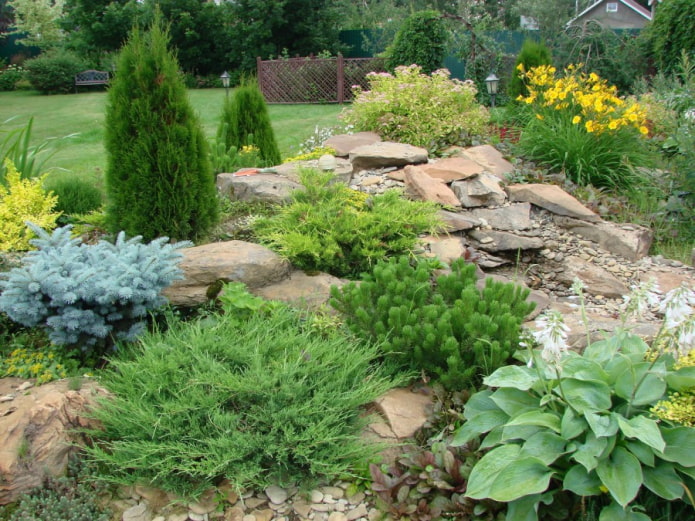
 10 practical tips for arranging a small kitchen in the country
10 practical tips for arranging a small kitchen in the country
 12 simple ideas for a small garden that will make it visually spacious
12 simple ideas for a small garden that will make it visually spacious
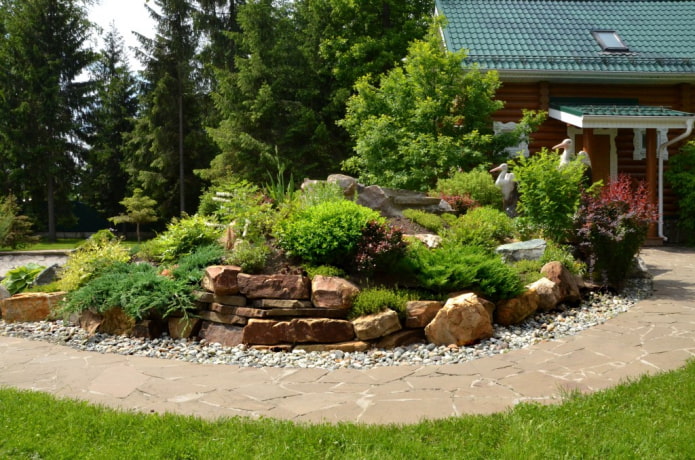
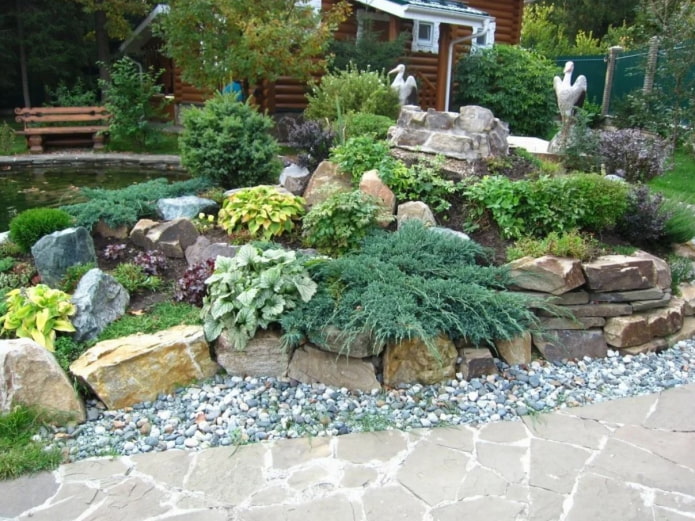
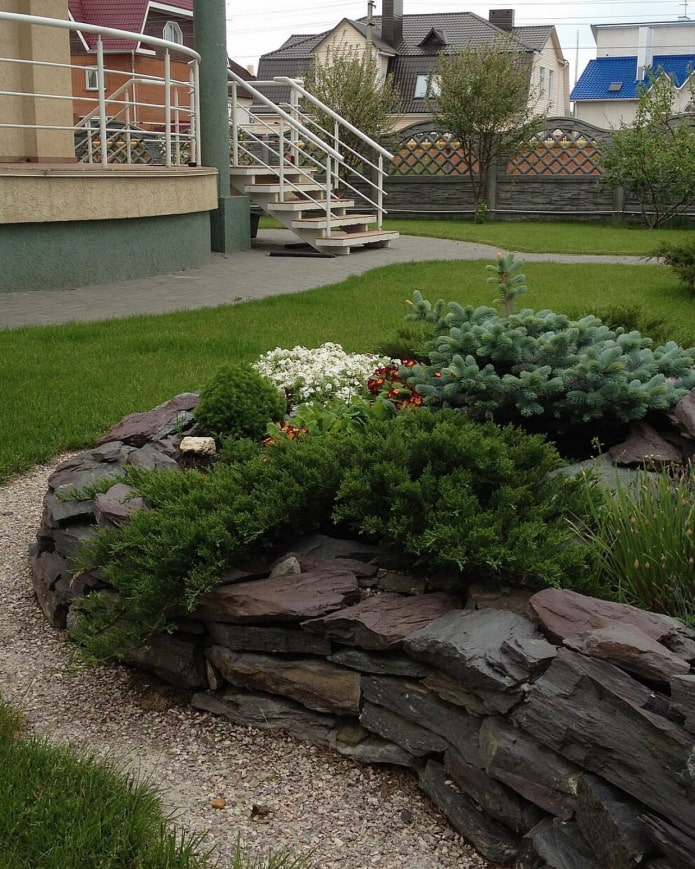
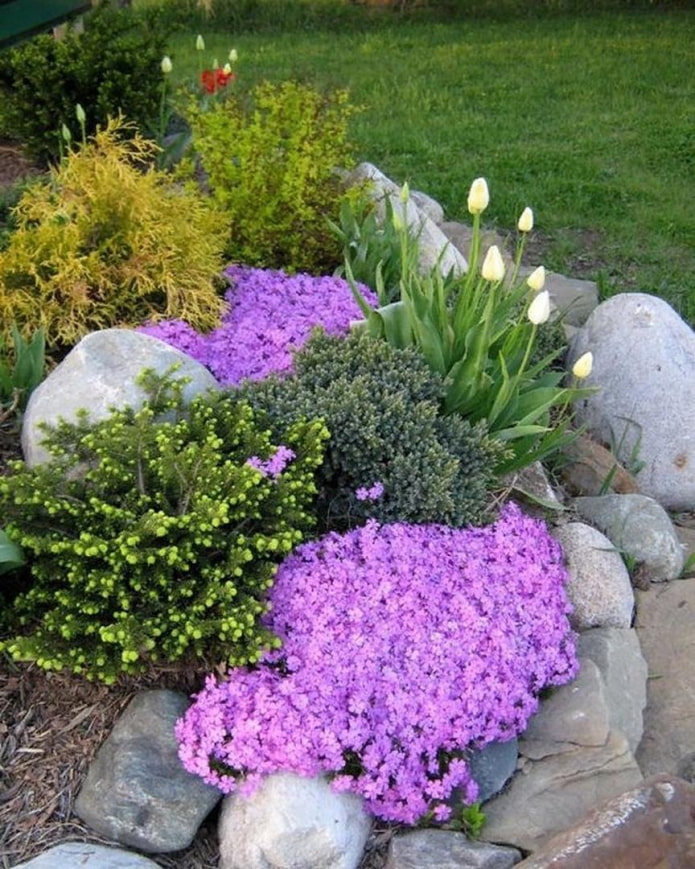

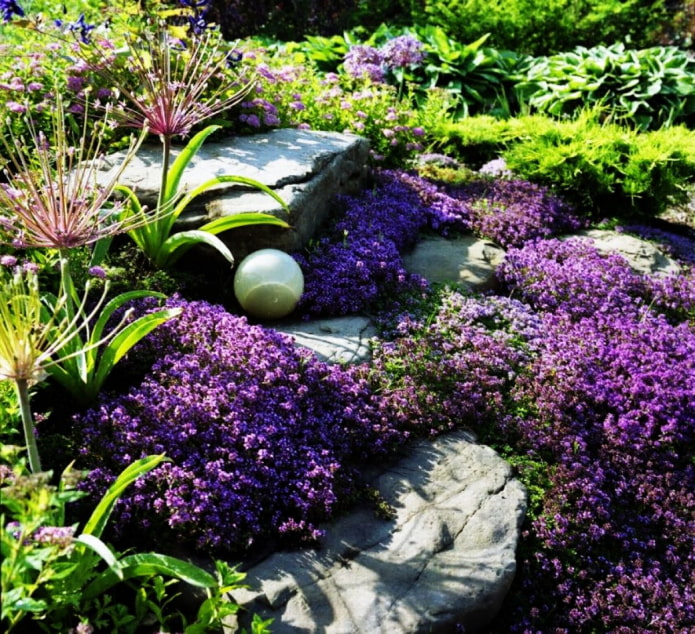
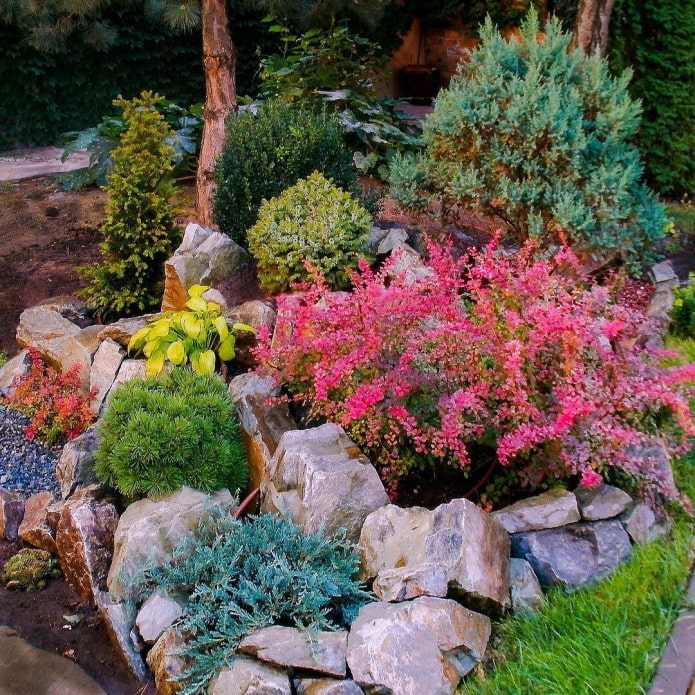
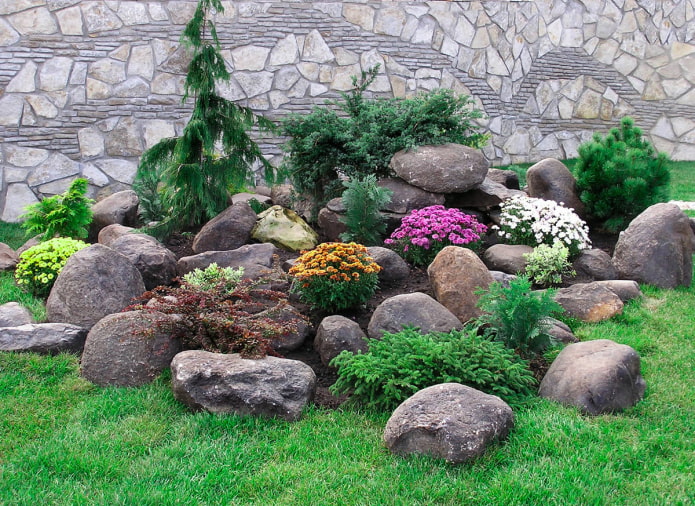
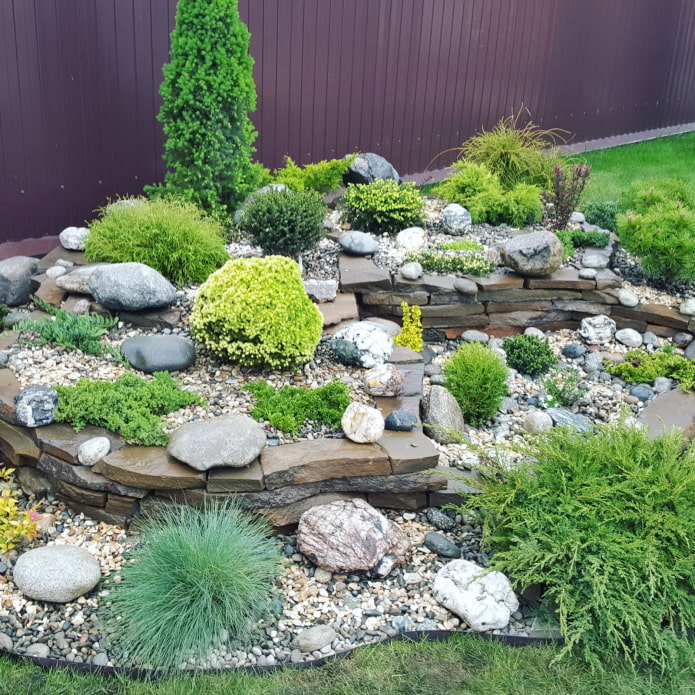
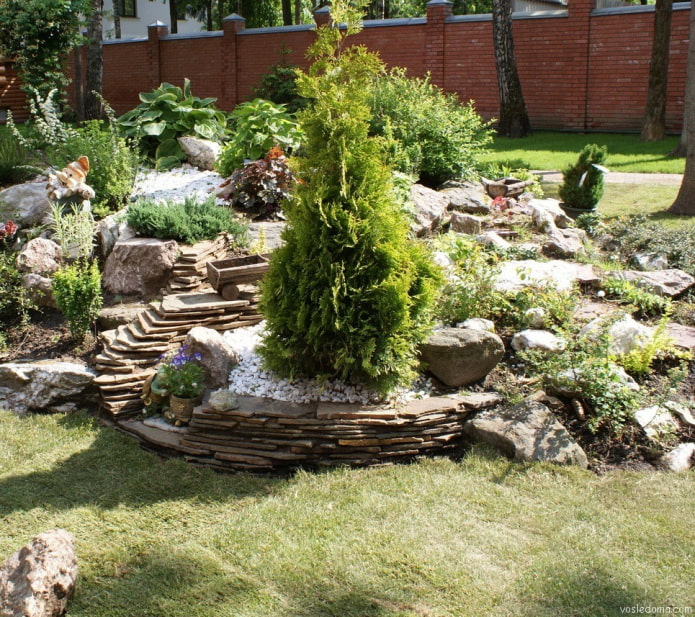
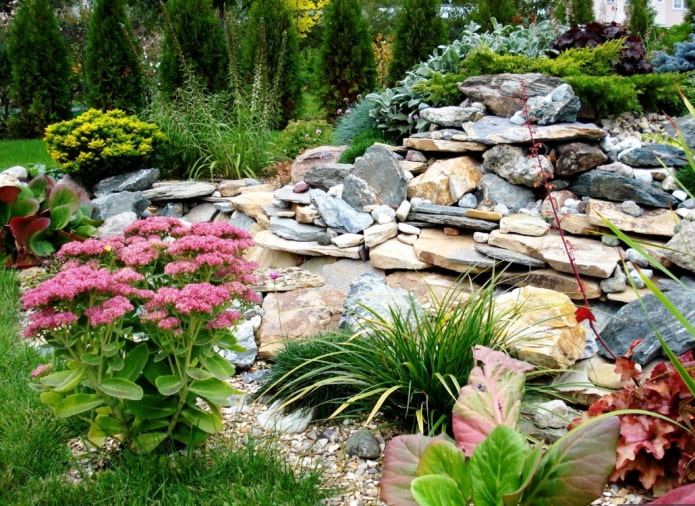
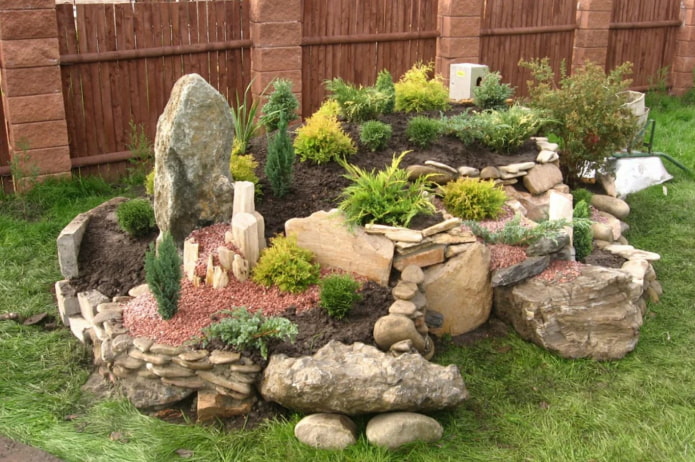
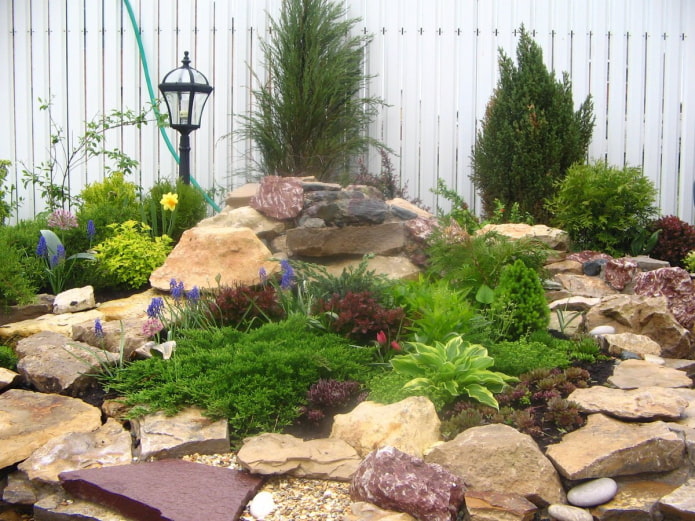
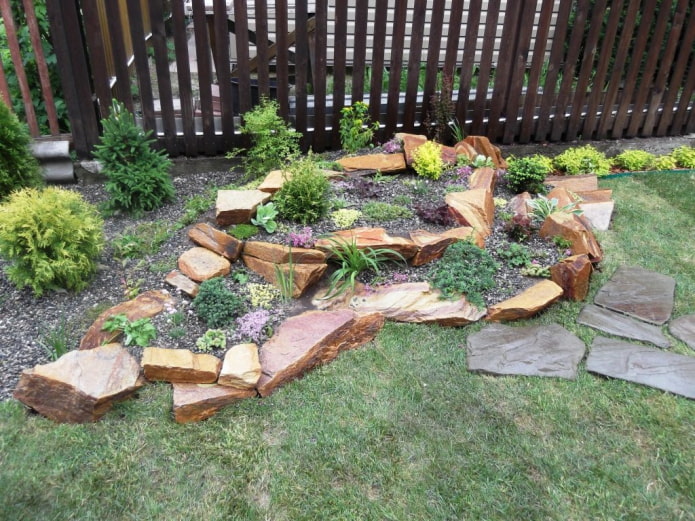
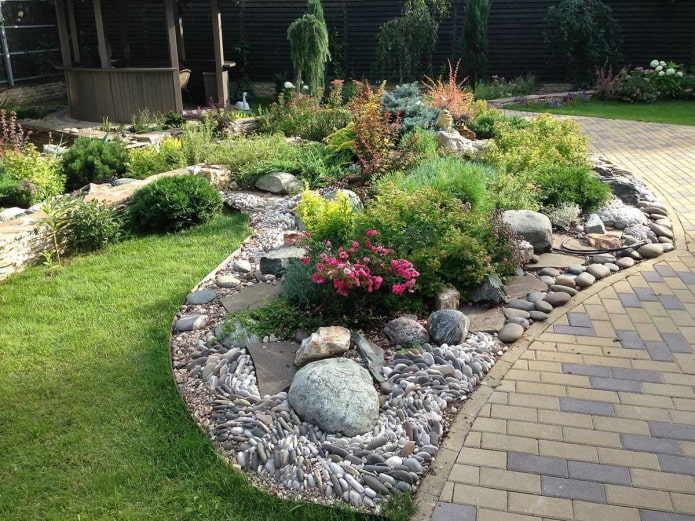
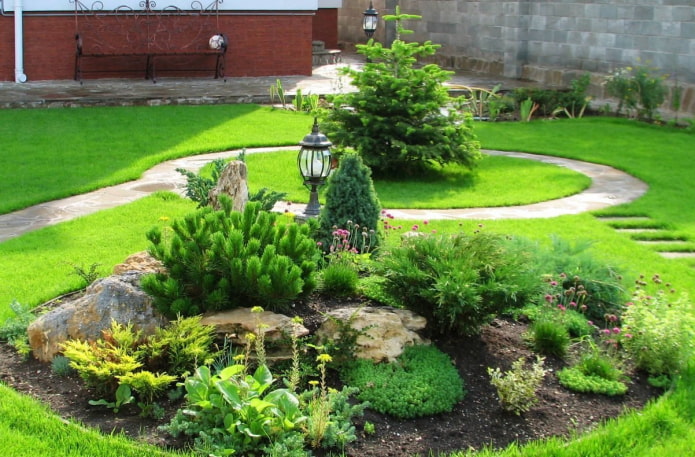
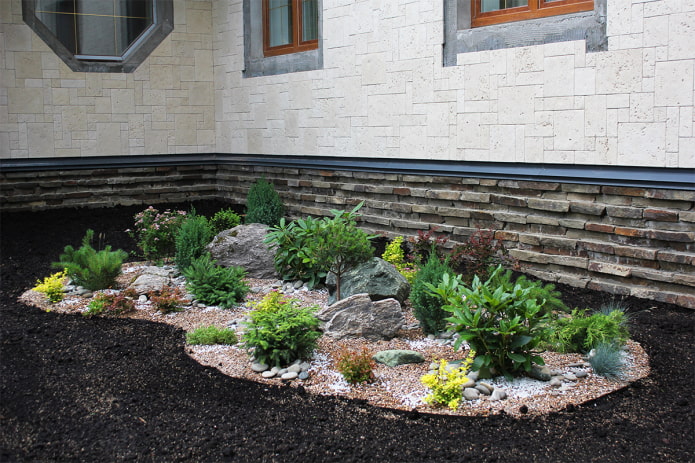
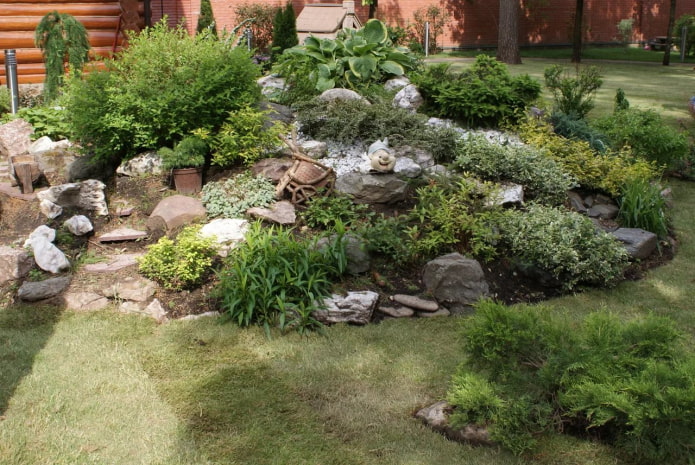
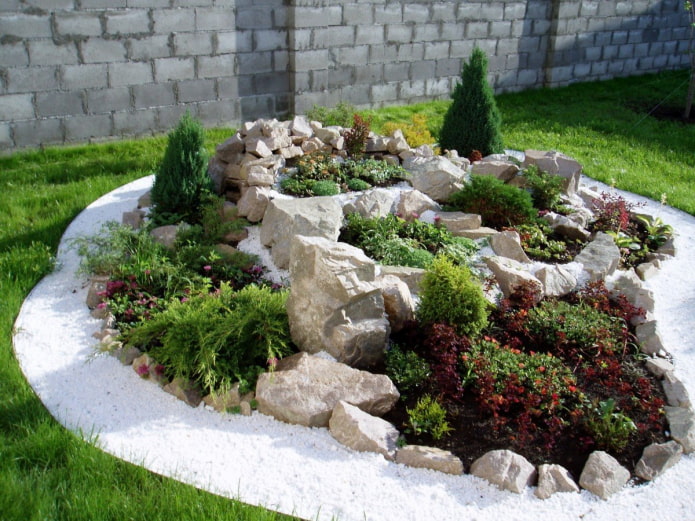
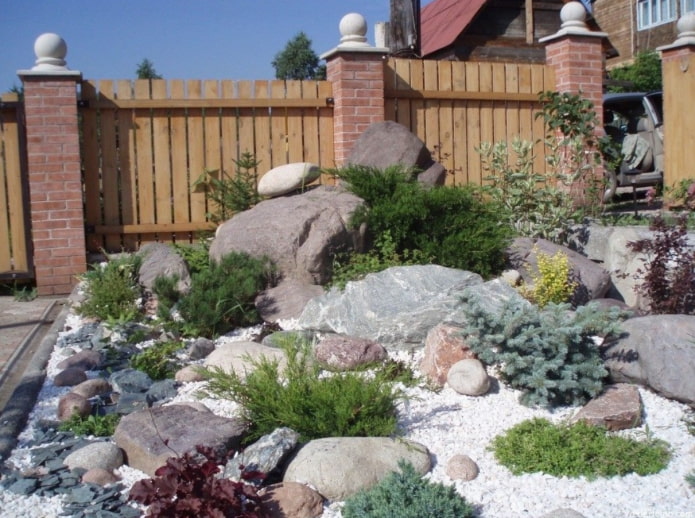
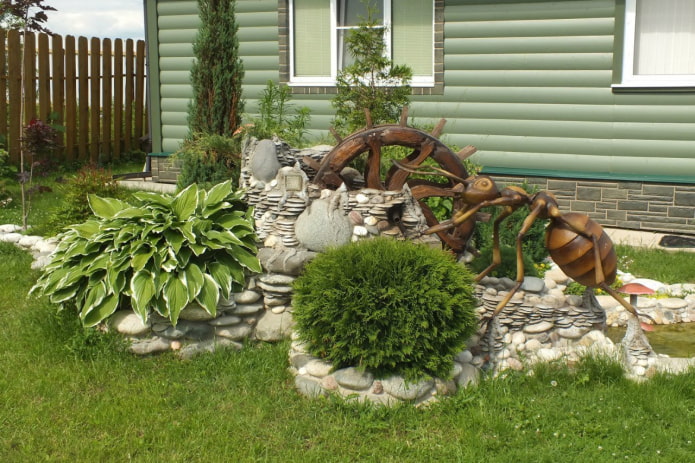
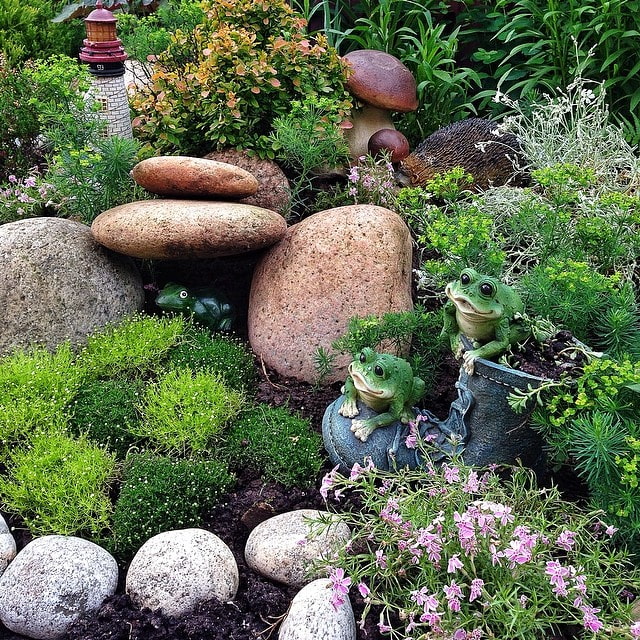
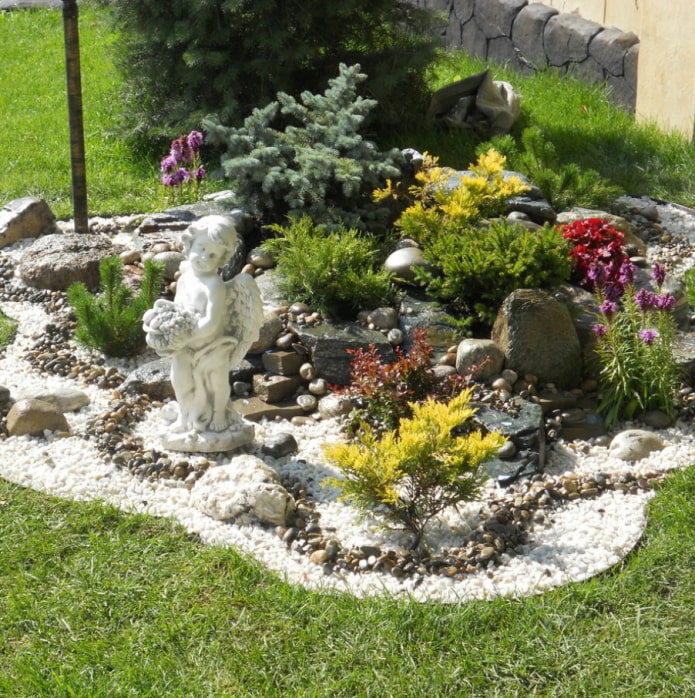
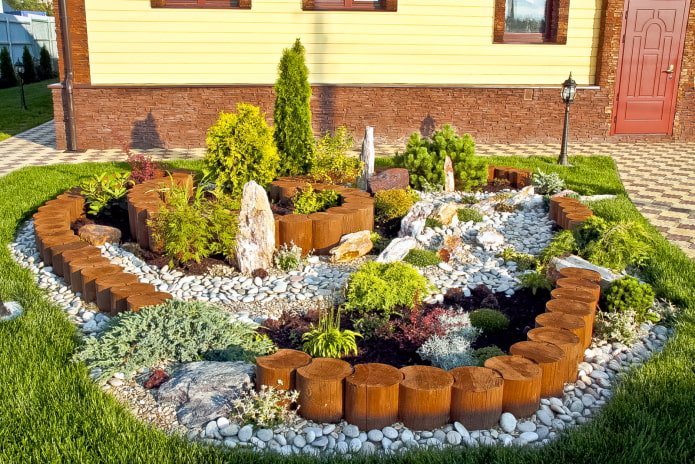
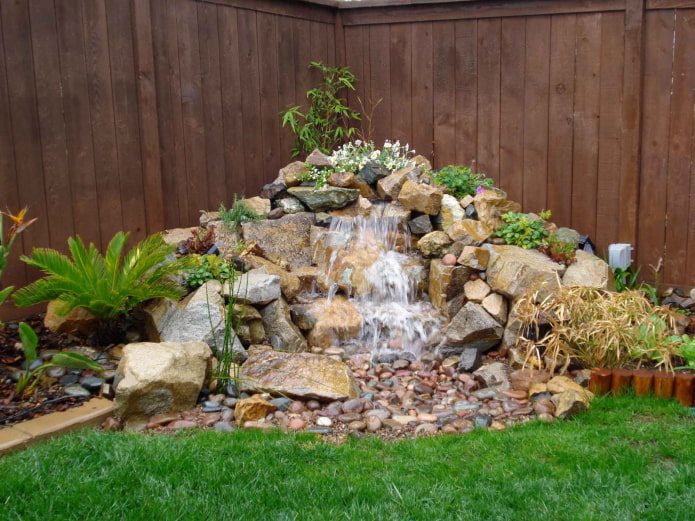
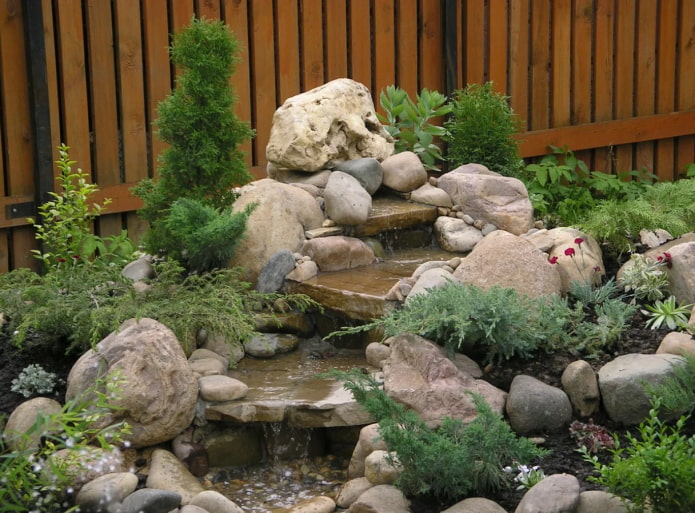
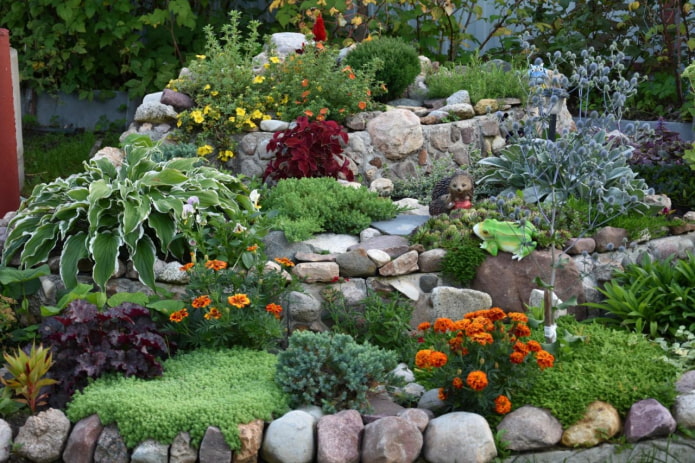
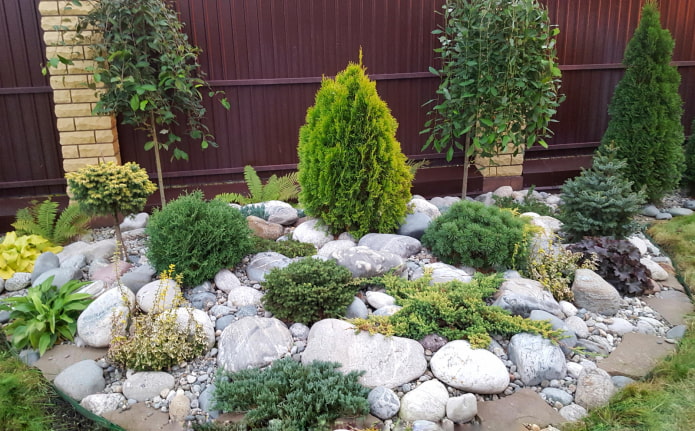

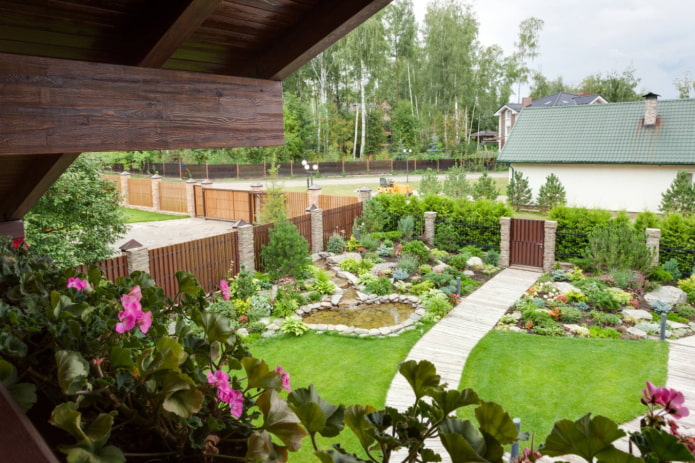

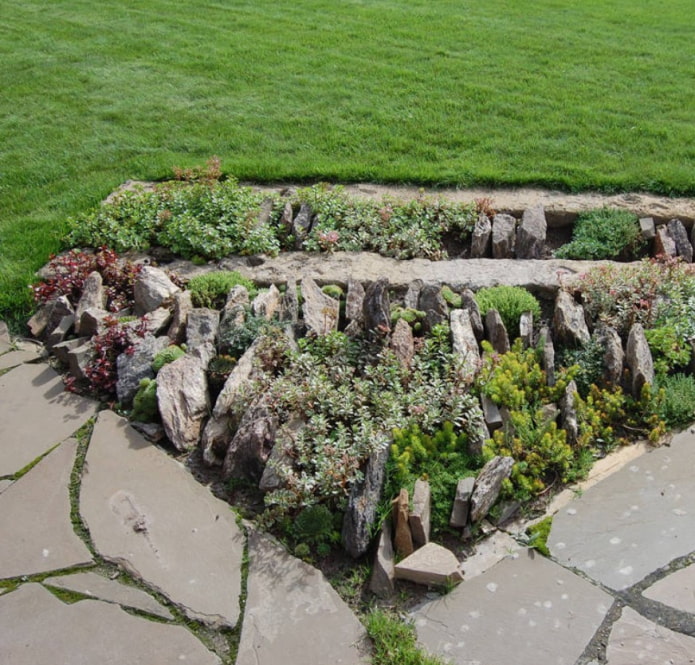
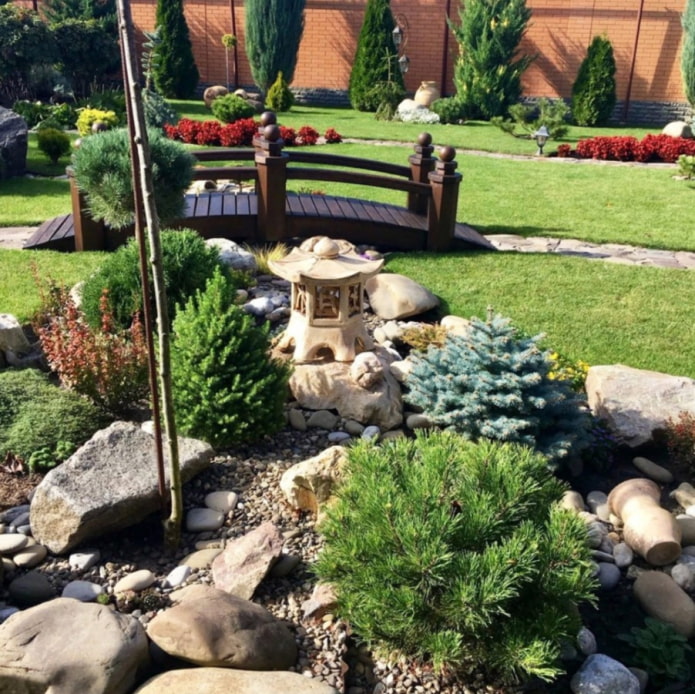
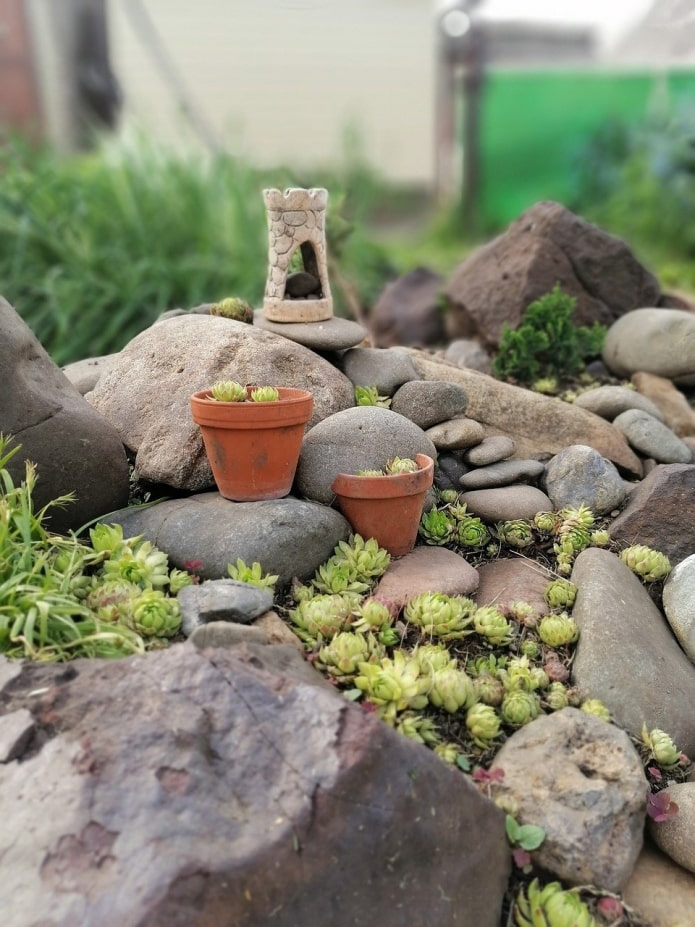
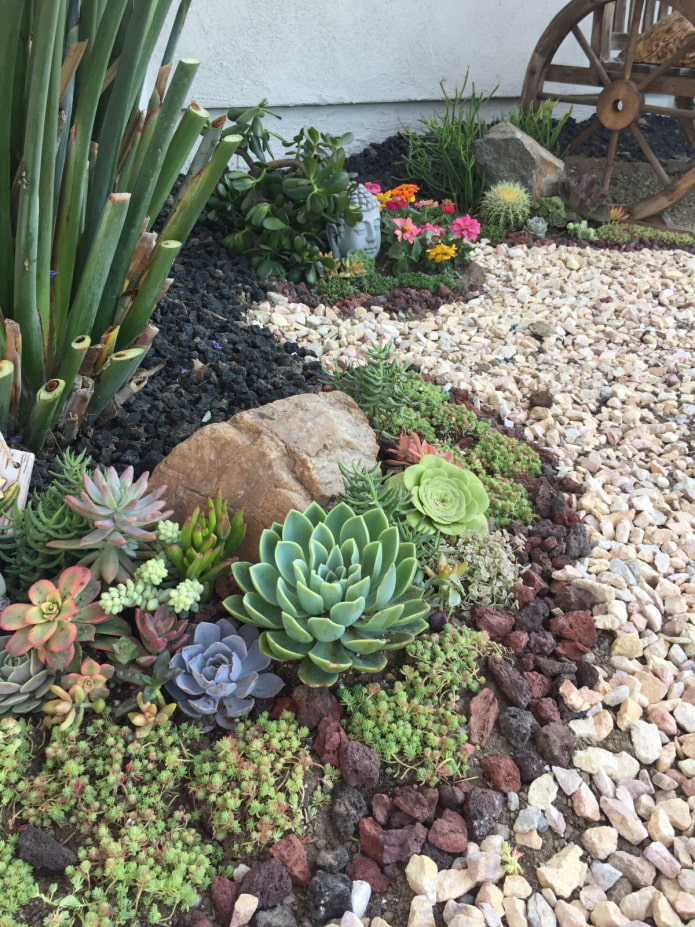
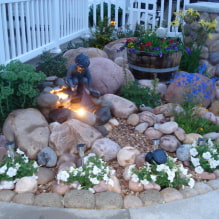

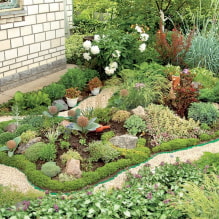
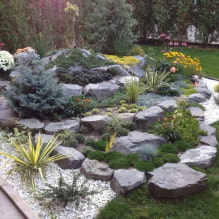
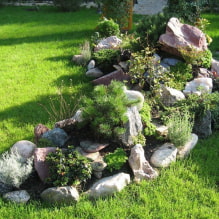
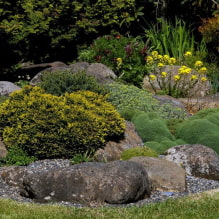
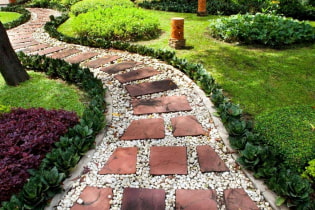 How to decorate garden paths beautifully for a summer residence?
How to decorate garden paths beautifully for a summer residence?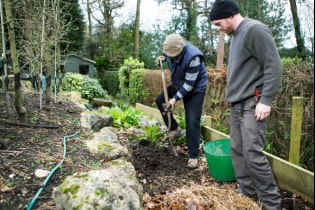 What fertilizers should be used in spring?
What fertilizers should be used in spring? How to use gabions on the site?
How to use gabions on the site?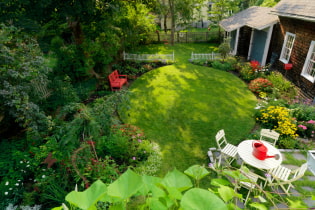 Landscaping of a summer cottage on 6 acres
Landscaping of a summer cottage on 6 acres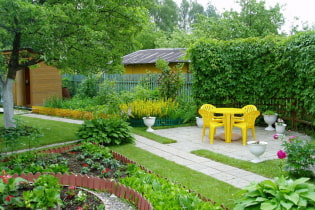 How to arrange the landscape design of a suburban area of 4 ares?
How to arrange the landscape design of a suburban area of 4 ares?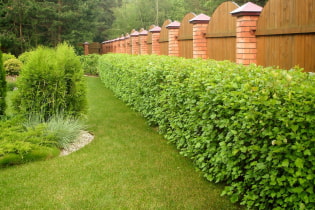 What plants can you make a hedge?
What plants can you make a hedge?